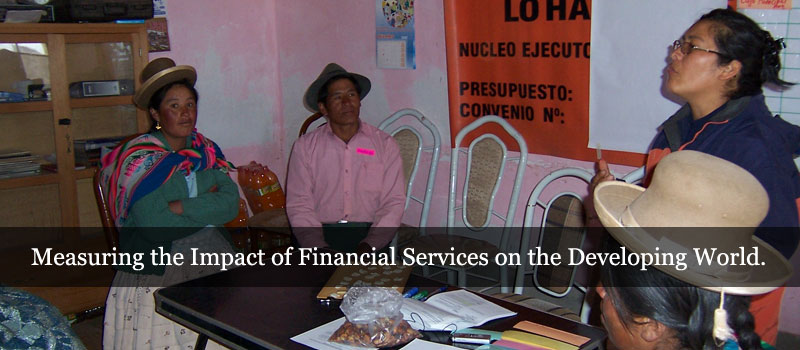A Reinterpretation of Mandatory Savings—with Conditions
A new study by Microfinance Opportunities of clients at a Latin American MFI found that these savings can help both groups, but that the organization undercut confidence in this resource by appropriating the savings to cover loan defaults. The research suggests that MFIs like Pro Mujer Peru, or PMP, face a difficult choice between encouraging savings and sustaining their current group-loan methodologies.
Microfinance Opportunities' investigation centered on the Premium loan offered by PMP, which helps women become self-supporting through financial opportunities, training and health care. This loan features a longer term, less frequent payments, and lower interest rate than PMP's Regular loan product. The Premium loan follows PMP's group-lending methodology, though the loan groups are considerably smaller than Regular loan groups. The loan is targeted at (and limited to) PMP's longer-term, more successful microentrepreneur borrowers—a bigger loan to meet the needs of bigger borrowers.
An Intriguing Initial Visit and a Follow-up
Upon our first visit in November 2008, we found considerable buzz among Premium clients about the savings connected to the loan. PMP requires clients to save money in set percentages (0-20 percent at the start of the loan, depending on loan size and cycle number, with another 10 percent built over the loan term). The accounts offer a very low level of interest—considerably less than commercial banks. But almost unanimously, clients liked it. Rather than viewing it as "the price of borrowing" (Rutherford, 2005, p. 22), clients saw it as a productive way to amass resources over time.
The mandatory nature of the savings, coupled with PMP's relatively liberal policy on withdrawals, was seen as critical. Simply put, these clients like to be forced to save, but also wanted reasonable access to those savings when they needed them, which PMP afforded (see "Ways to Savings" box on next page for explanation of withdrawal policies).
Beyond these PMP accounts, savings behavior was scant—only about one-third of respondents had voluntary savings accounts, and only about 20 percent had voluntary savings accounts with formal financial institutions (the rest saved at home). The initial observations on savings inspired a follow-up investigation in June 2009, which combined analysis of PMP's management-information system data with additional client interviews more tightly focused on savings behavior. In the end, we saw support for the utility of PMP's mandatory savings, but also a critical drawback that lay mostly dormant until Peru's economy weakened substantially in early 2009.




